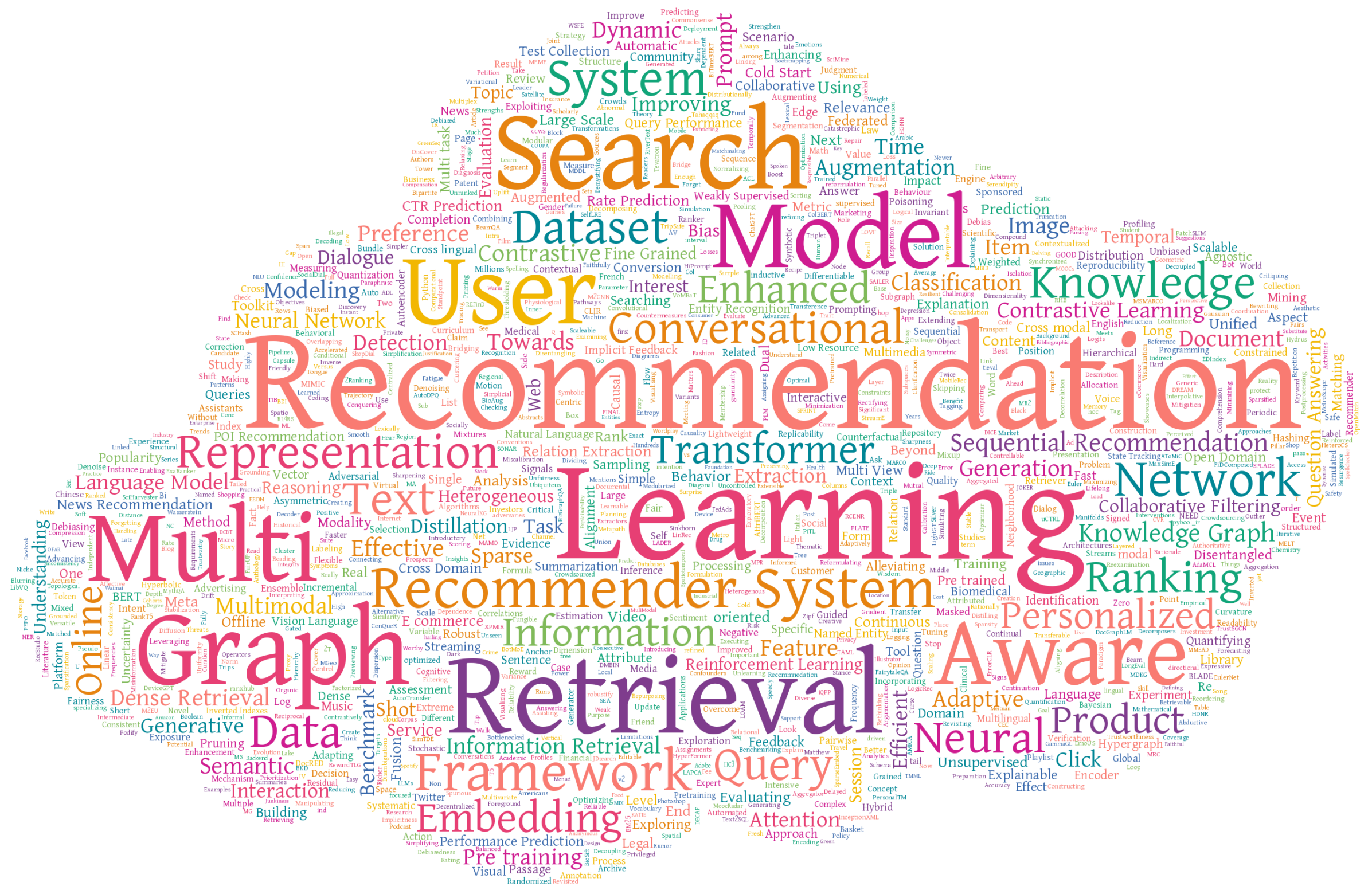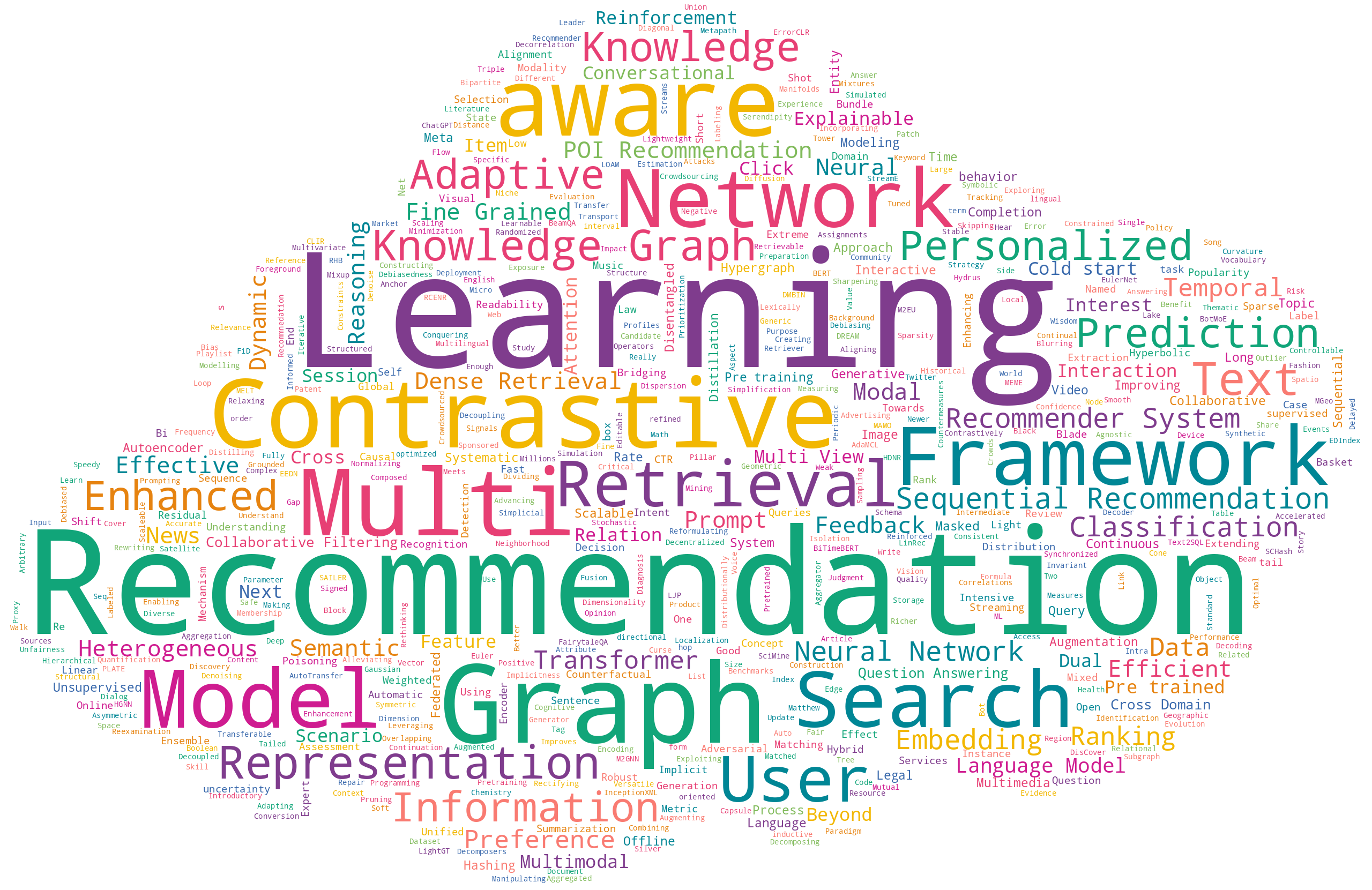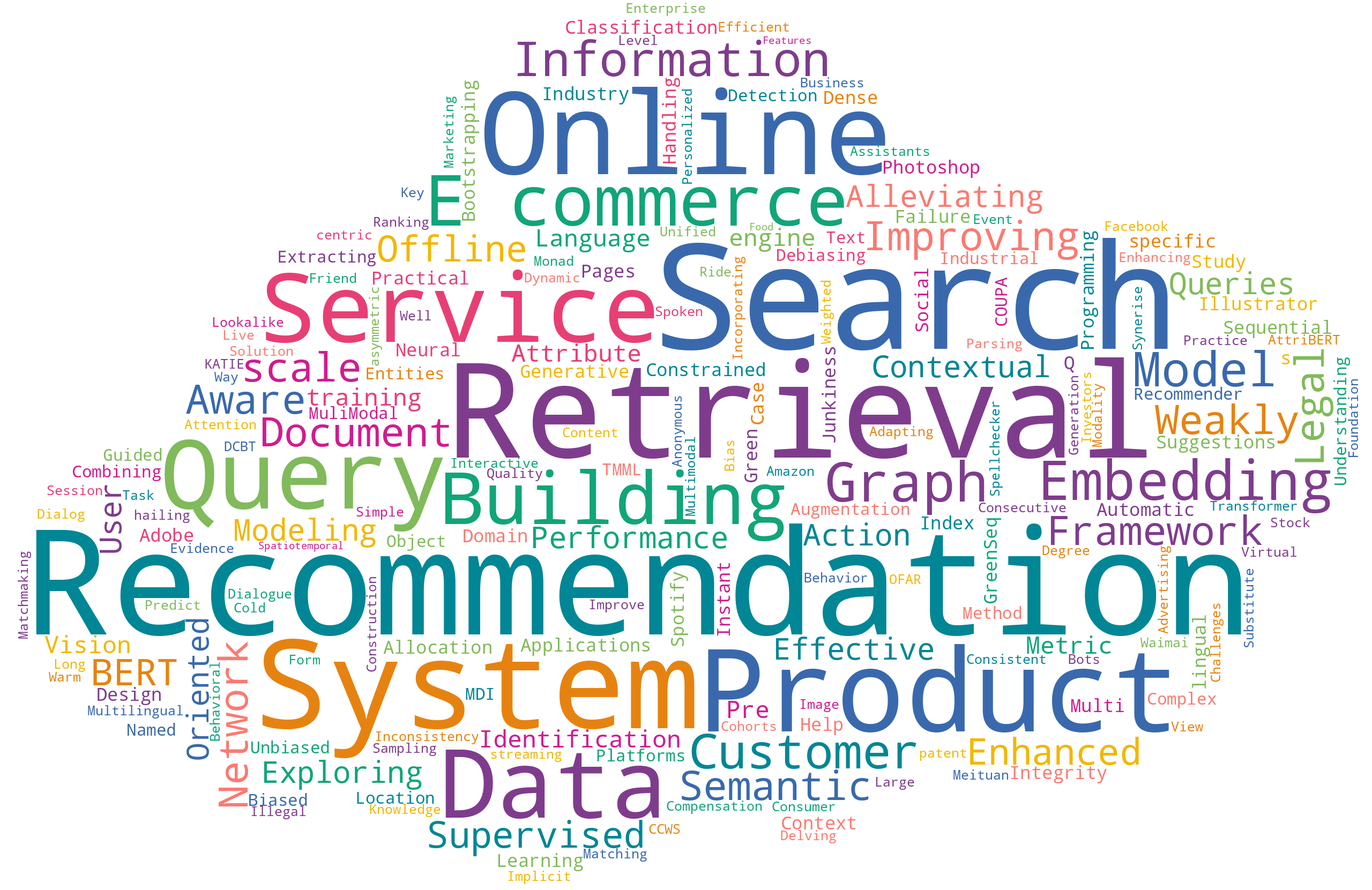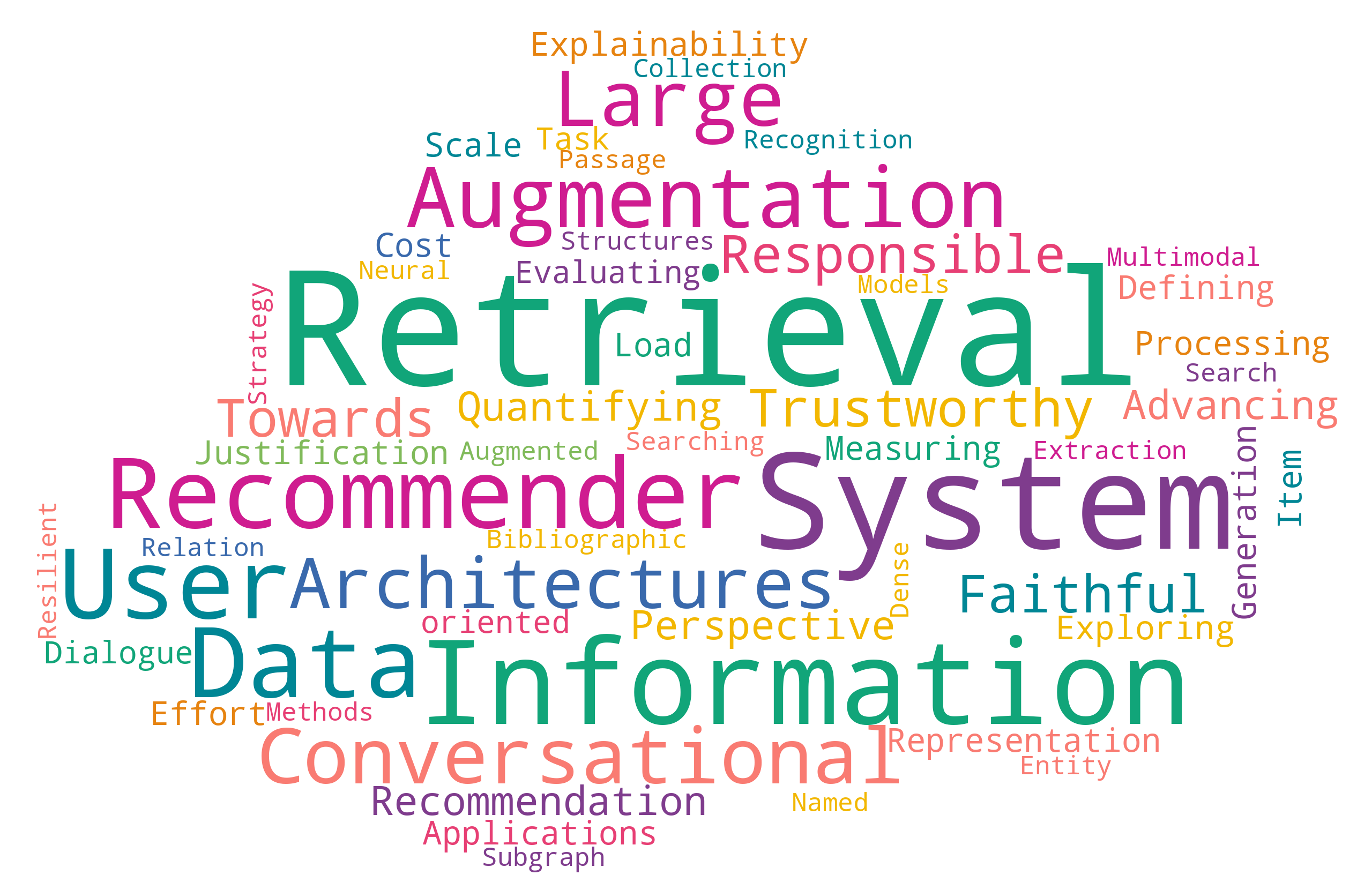SIGIR 2023 Statistics
This blog post is inspired from Hamed's earlier blog posts for SIGIR reports.
Unfortunately, I did not have the chance to attend SIGIR 2023 this year in Taiwan! I almost was following the updates from SIGIR on Twitter, thanks to the ones who were sharing the amazing and inspiring moments at SIGIR 2023 and congratulation to all the winners!
However, I thought that would be great if we have a very short stat of SIGIR this year! This is the first time that I post the state of a conference like SIGIR! However, we know that during the past years, Hamed Zamani and Jimmy Lin reported the stats of SIGIR conferences. Here is the link to the SIGIR 2019, SIGIR 2020, and SIGIR 2021 report.
The following information and summarisation have been automatically extracted from the full list of accepted papers of all tracks to ACM SIGIR 2023. Please let me know if you find any errors in the reported statistics.
Note that the SIGIR website only released the title and the name of the authors of the accepted papers. Therefore, there is no affiliation/institution-level analysis in this report.
First, we can take a look at a WordCloud I created from the titles of the accepted papers (all tracks, excluding Doctoral Consortium papers):

The WordCloud of the titles of all papers show a high frequency of words such as Recommendation, Learning, Search, Retrieval, User, text, and Graph is not very surprising as we have seen a similar pattern from the SIGIR 2021 report.



Then, we can see the WordCloud for full (165 papers), SIRIP-Industry (40 papers), and Doctoral Consortium (11 papers) papers. We can see a higher frequency of the words Graph and Learning in full papers while they are not very frequent in SIRIP papers. However, we can see the word Online that indicates the importance of online experiments and evaluation. More interestingly, doctoral consortium papers show the high frequency of the words Large and Augmentation that indicate a high prevalence of LLM-related PhD topics.
TOP 10 AUTHORS – All Papers (Full, Short, Perspective, Reproducibility, Demo, Resource, SIRIP Industrial tracks) – Based on Normalized Publication Count
- #1 Maarten De Rijke, Professor, University of Amsterdam (score: 2.48)
- #2 Hamed Zamani, Assistant Professor, UMass Amherst (score: 1.78)
- #3 Sean Macavaney, Assistant Professor, University of Glasgow (score: 1.52)
- #4 Jun Zhou, Ant Group, China (score: 1.42)
- #5 Jimmy Lin, Professor, University of Waterloo (score: 1.31)
- #6 Riku Togashi, CyberAgent Inc., Japan (score: 1.25)
- #7 Harrisen Scells, Research Fellow, Leipzig University (score: 1.2)
- #7 Aixin Sun, Associate Professor, Nanyang Technological University (score: 1.2)
- #8 Martin Potthast, Professor, Leipzig University (score: 1.18)
- #9 Michael Bendersky, Google Research, US (score: 1.14)
Note that the normalised publication count socres were computed by normalizing publication counts by the number of authors per paper.
TOP 10 AUTHORS – All Papers (Full, Short, Perspective, Reproducibility, Demo, Resource, SIRIP Industrial tracks) – Based on Publication Count
- #1 Maarten De Rijke, Professor, University of Amsterdam (10 papers)
- #1 Jun Zhou, Ant Group, China (10 papers)
- #2 Fuzhen Zhuang, Professor, Beihang University (8 papers)
- #3 Xiangyu Zhao, Assistant Professor, City University of Hong Kong (7 papers)
- #4 Hamed Zamani, Assistant Professor, UMass Amherst (6 papers)
- #4 Liqiang Nie, Professor, Shandong University (6 papers)
- #4 Zhenhua Dong, Noah’s ark lab, Huawei Technologies Co. (6 papers)
- #4 Ruiming Tang, Noah’s Ark Lab, Huawei Technologies Co. (6 papers)
- #4 Jimmy Lin, Professor, University of Waterloo (6 papers)
- #5 Yiqun Liu, Professor, Tsinghua University (5 papers)
- #5 Tat-Seng Chua, Professor, National University of Singapore (5 papers)
- #5 Sean Macavaney, Assistant Professor, University of Glasgow (5 papers)
- #5 Martin Potthast, Professor, Leipzig University (5 papers)
- #5 Enhong Chen, Professor, University of Science and Technology of China (5 papers)
TOP 10 AUTHORS – Only full papers – Based on Normalized Publication Count
- #1 Hamed Zamani, Assistant Professor, UMass Amherst (score: 1.78)
- #2 Maarten De Rijke, Professor, University of Amsterdam (score: 1.65)
- #3 Naoto Ohsaka, CyberAgent Inc., Japan (score: 1.0)
- #3 Riku Togashi, CyberAgent Inc., Japan (score: 1.0)
- #3 Andrés Hoyos-Idrobo, Rakuten Group Inc., France (score: 1.0)
- #4 Liqiang Nie, Professor, Shandong University (score: 0.88)
- #4 Tat-Seng Chua, Professor, National University of Singapore (score: 0.88)
- #5 Fuzhen Zhuang, Professor, Beihang University (score: 0.84)
- #6 Yi Cai, Professor, South China University of Technology (score: 0.75)
- #7 Hongzhi Yin, Associate Professor, University of Queensland (score: 0.71)
Note that the normalised publication count socres were computed by normalizing publication counts by the number of authors per paper.
TOP 10 AUTHORS – Only full papers – Based on Publication Count
- #1 Maarten De Rijke, Professor, University of Amsterdam (7 papers)
- #2 Hamed Zamani, Assistant Professor, UMass Amherst (6 papers)
- #2 Fuzhen Zhuang, Professor, Beihang University (6 papers)
- #3 Liqiang Nie, Professor, Shandong University (5 papers)
- #3 Xiangyu Zhao, Assistant Professor, City University of Hong Kong (5 papers)
- #3 Tat-Seng Chua, Professor, National University of Singapore (5 papers)
- #4 Xiangnan He, Professor, University of Science and Technology of China (4 papers)
- #4 Zhenhua Dong, Noah’s ark lab, Huawei Technologies Co (4 papers)
- #4 Ruiming Tang, Noah’s Ark Lab, Huawei Technologies Co (4 papers)
- #4 Hongzhi Yin, Associate Professor, University of Queensland (4 papers)
Enjoy Reading This Article?
Here are some more articles you might like to read next: